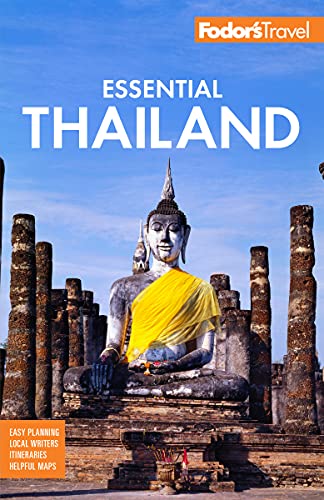Eating and Drinking Well in Southern Thailand
Get ready for the south's distinctive flavors. Turmeric, peanuts, and coconut milk are a few ingredients that play larger roles here than they do in the north. And, of course, there's no shortage of delectable fresh seafood.
Southern Thailand has a larger Muslim population than the rest of the country, and you'll find this halal diversity in southern cuisine, along with Malaysian, Lao, and even Indian influences along the coast. Spiciness is a defining characteristic of southern food, though as in other regions, restaurants that cater to tourists sometimes tone down the chilies (beware: if you ask for something to be very spicy, locals will be glad to challenge you). A meal in the south is all about the experience. Though you'll run into some tourist traps in areas like Phuket, in general you're likely to find the real deal—authentic cuisine at decent prices. It's hard to beat a frosty Chang beer and fresh crab married with a complex curry paste and coconut cream, just steps from the edge of the turquoise Andaman Sea.
Seafood
In the Andaman Coast it's all about abundant seafood varieties. Beachside shacks serve all sorts of aquatic treats, from octopus to crab—and foodies will absolutely love the prices. Imagine a heaping plate of fresh, grilled sea bass for just a few dollars; that same dish stateside would have a couple more zeros attached to it.
Gaeng Massaman
A Muslim dish by origin (its name is derived from Musulman, an older version of the word "Muslim"), massaman curry has a distinct flavor that's somewhat reminiscent of Indian cuisine. It's not usually a spicy dish, but peanuts add a big burst of flavor and an even bigger crunch. Coconut milk softens everything, and the result is a soupy and comforting curry. It's made with a variety of meats but rarely fish.
Gaeng Som
Known as sour curry, this dish is usually spicy as well as tart. It's made with fish sauce instead of coconut milk, and the flavor can take some getting used to. It's typically made with fish (gaeng som pla) and green vegetables, such as cabbage and beans. Sour curry is runnier than coconut-milk curries—more like a sauce—and tends to acquire a greenish hue from all the vegetables it contains.
Khao Mok Kai
This simple but delicious chicken-and-rice dish is a Thai version of Indian chicken biryani, which means "fried" or "roasted." Chicken—which is usually on the bone—lies under a fragrant mound of rice, which owes its bright yellow color to a liberal amount of turmeric. Though turmeric often shows up in Indian cuisine, this is one of its few cameos in southern Thailand food. Deep-fried shallots add another element of textural complexity.
Boo Paht Pong Karee
Curry-powder crab is not a traditional, soupy curry: whole crab is fried in a mixture of curry powder and other spices. The piquant curry is a perfect counterpoint to the sweet crabmeat. Coconut milk is often used to moisten the mix and moderate the spiciness. You'll find other kinds of seafood prepared this way in the south, but crab is particularly tasty.
Pla
Whole fish such as garoupa (grouper) is often on the menu in the south, and is so much more flavorful than fillets. Garlic and chilies are common seasonings, and the skin is usually cooked until it's deliciously crispy. It may be spicy, but whole fish is definitely a treat you don't get too often stateside. You can also find steamed versions and less spicy seasonings like ginger.




